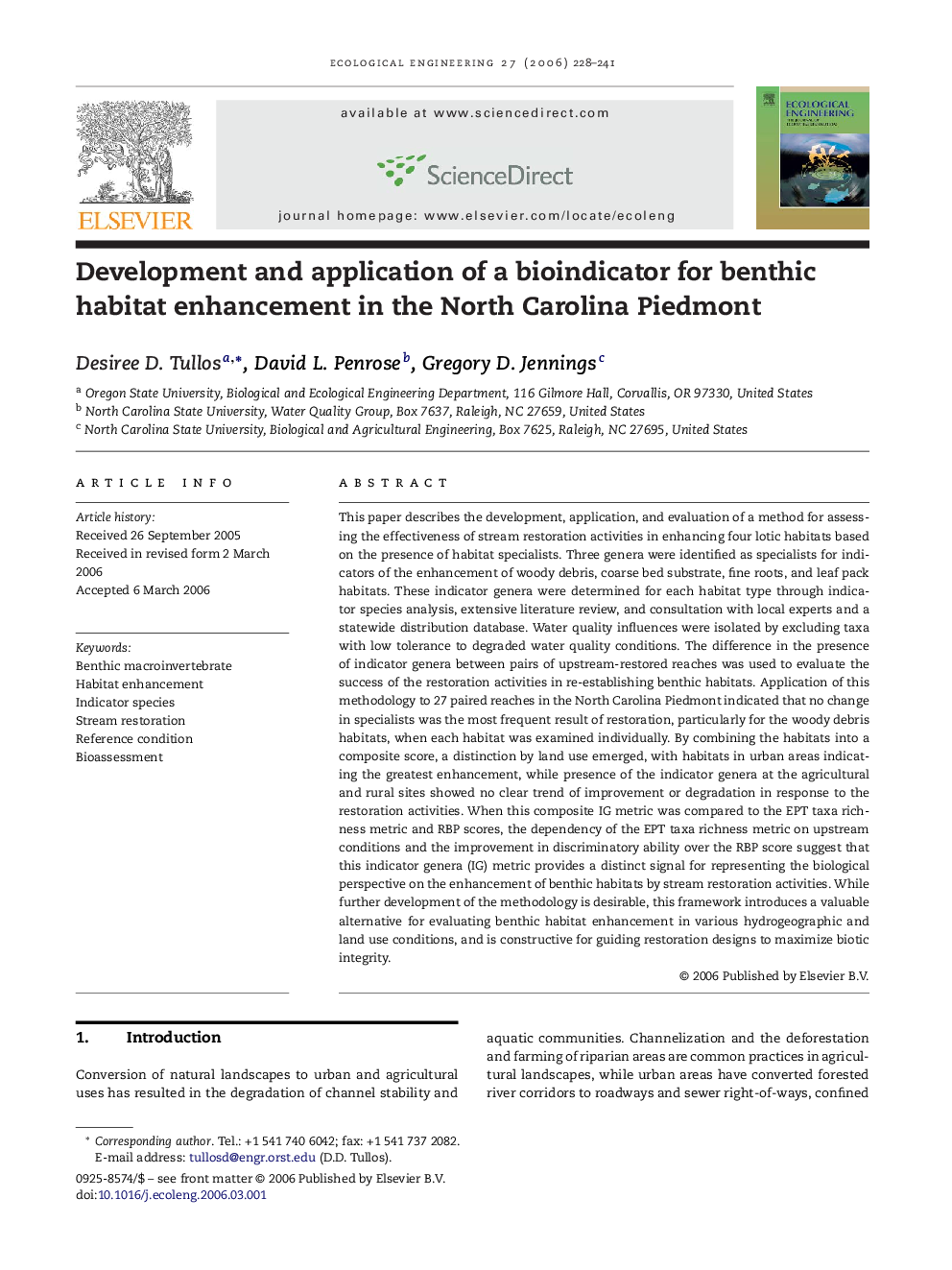| Article ID | Journal | Published Year | Pages | File Type |
|---|---|---|---|---|
| 4391299 | Ecological Engineering | 2006 | 14 Pages |
This paper describes the development, application, and evaluation of a method for assessing the effectiveness of stream restoration activities in enhancing four lotic habitats based on the presence of habitat specialists. Three genera were identified as specialists for indicators of the enhancement of woody debris, coarse bed substrate, fine roots, and leaf pack habitats. These indicator genera were determined for each habitat type through indicator species analysis, extensive literature review, and consultation with local experts and a statewide distribution database. Water quality influences were isolated by excluding taxa with low tolerance to degraded water quality conditions. The difference in the presence of indicator genera between pairs of upstream-restored reaches was used to evaluate the success of the restoration activities in re-establishing benthic habitats. Application of this methodology to 27 paired reaches in the North Carolina Piedmont indicated that no change in specialists was the most frequent result of restoration, particularly for the woody debris habitats, when each habitat was examined individually. By combining the habitats into a composite score, a distinction by land use emerged, with habitats in urban areas indicating the greatest enhancement, while presence of the indicator genera at the agricultural and rural sites showed no clear trend of improvement or degradation in response to the restoration activities. When this composite IG metric was compared to the EPT taxa richness metric and RBP scores, the dependency of the EPT taxa richness metric on upstream conditions and the improvement in discriminatory ability over the RBP score suggest that this indicator genera (IG) metric provides a distinct signal for representing the biological perspective on the enhancement of benthic habitats by stream restoration activities. While further development of the methodology is desirable, this framework introduces a valuable alternative for evaluating benthic habitat enhancement in various hydrogeographic and land use conditions, and is constructive for guiding restoration designs to maximize biotic integrity.
